
How to Use pc817 optotransistor: Examples, Pinouts, and Specs
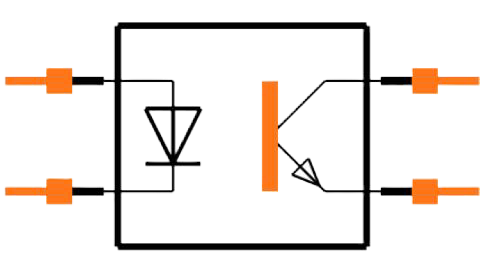
 Design with pc817 optotransistor in Cirkit Designer
Design with pc817 optotransistor in Cirkit DesignerIntroduction
The PC817 is a widely used optocoupler or optoisolator that consists of an infrared emitting diode (IRED) and a phototransistor. This electronic component is designed to transfer electrical signals through light waves, providing an optical isolation between its input and output. The PC817 is commonly used in applications requiring high-voltage insulation, signal isolation, and noise reduction, such as microcontroller interfacing, DC-DC converters, and signal transmission between different voltage circuits without direct electrical connection.
Explore Projects Built with pc817 optotransistor
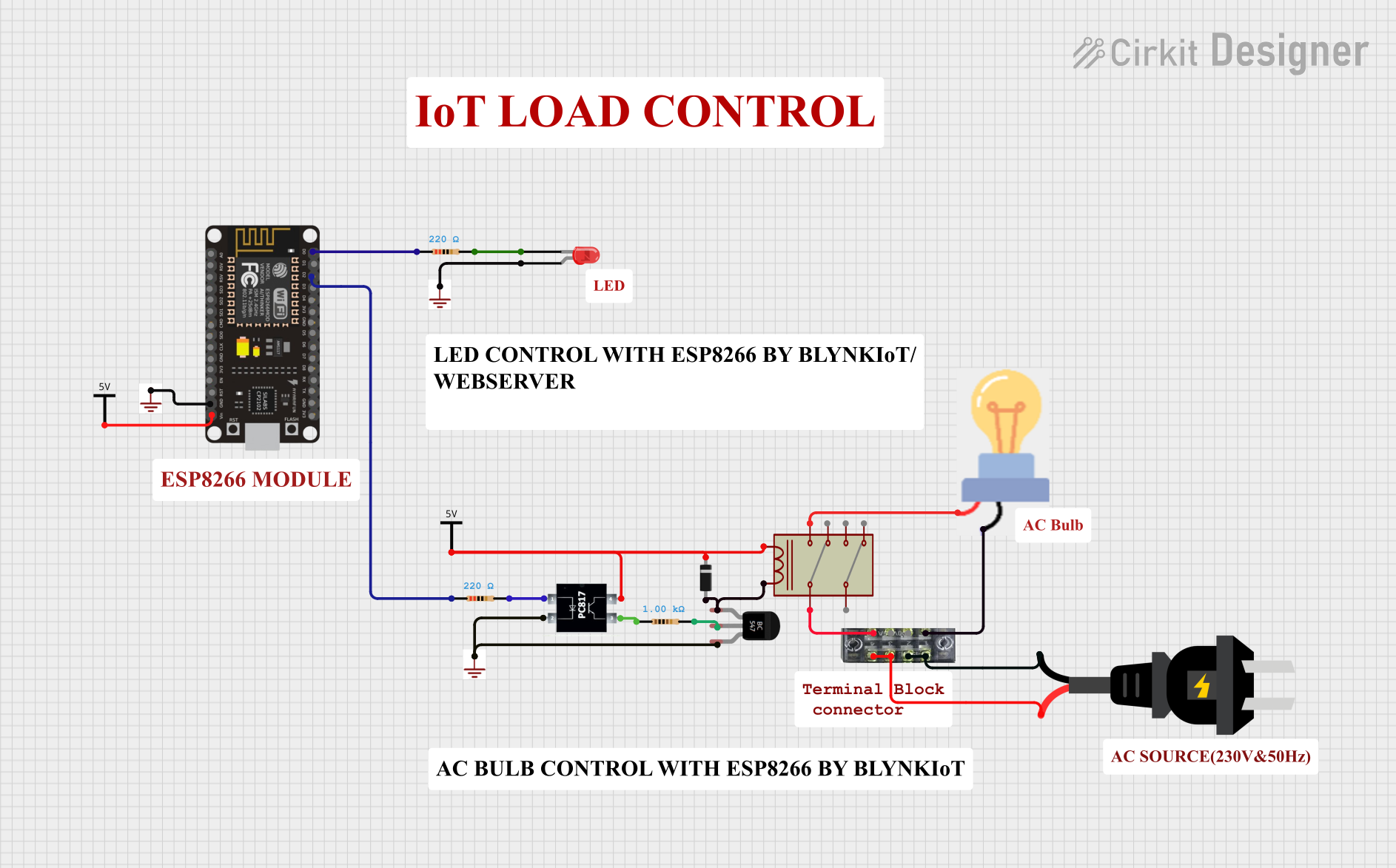
 Open Project in Cirkit Designer
Open Project in Cirkit Designer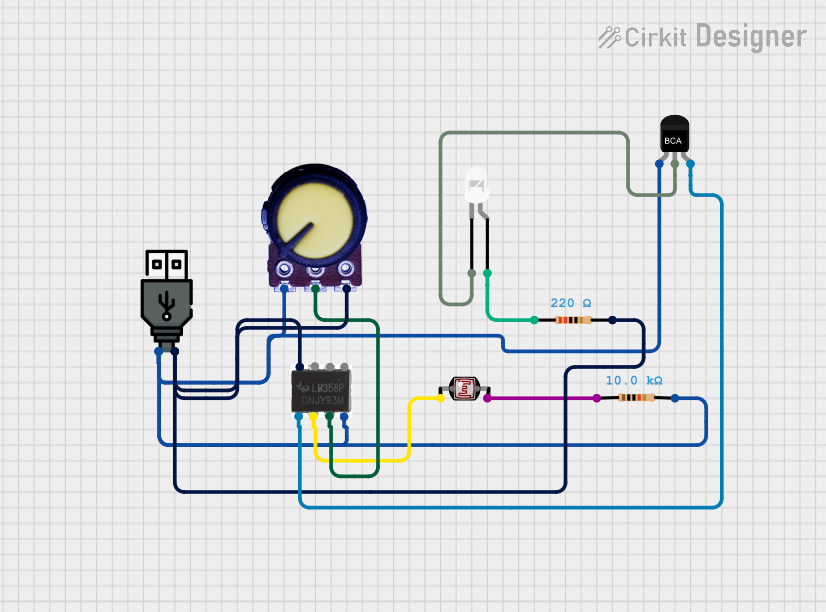
 Open Project in Cirkit Designer
Open Project in Cirkit Designer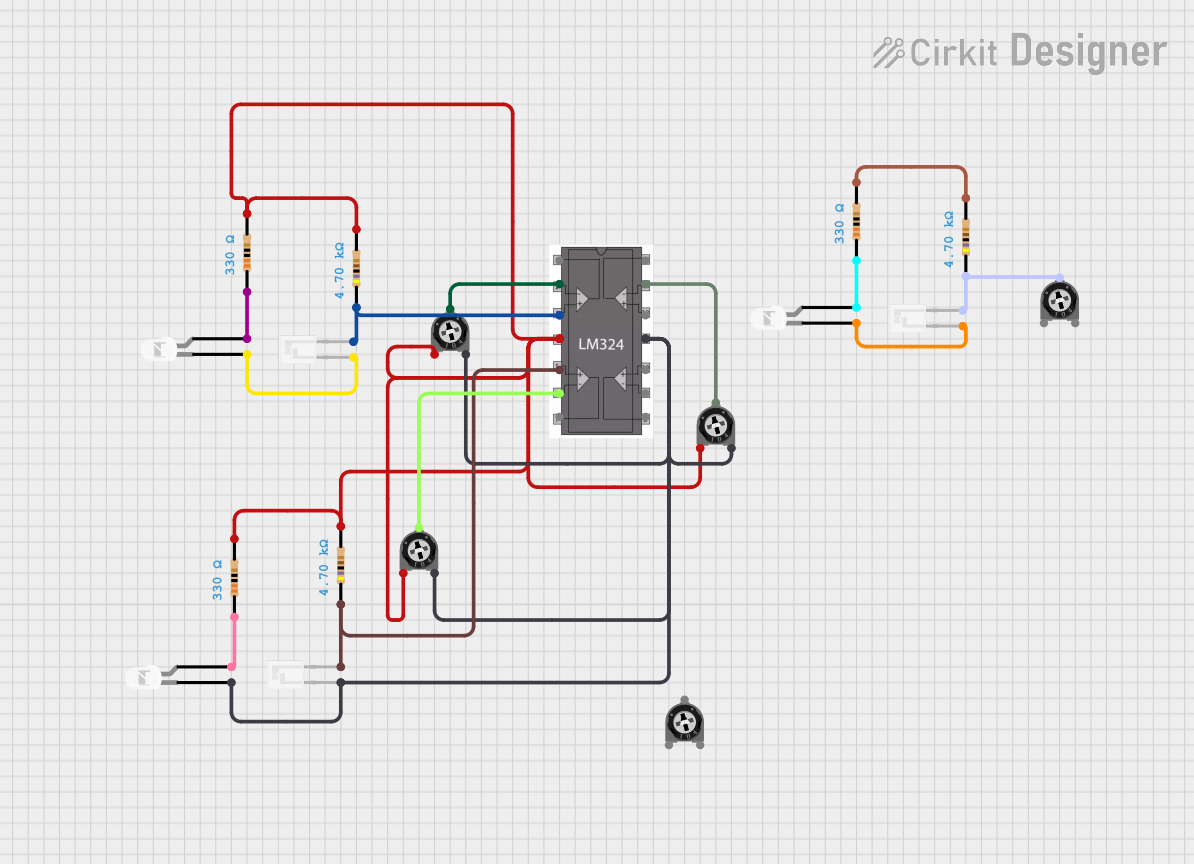
 Open Project in Cirkit Designer
Open Project in Cirkit Designer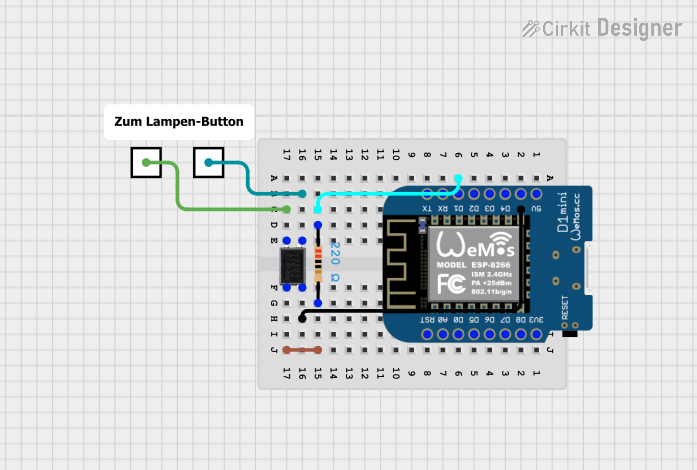
 Open Project in Cirkit Designer
Open Project in Cirkit DesignerExplore Projects Built with pc817 optotransistor

 Open Project in Cirkit Designer
Open Project in Cirkit Designer
 Open Project in Cirkit Designer
Open Project in Cirkit Designer
 Open Project in Cirkit Designer
Open Project in Cirkit Designer
 Open Project in Cirkit Designer
Open Project in Cirkit DesignerTechnical Specifications
Key Technical Details
- Forward Current (IF): 50mA (max)
- Reverse Voltage (VR): 6V (max)
- Collector-Emitter Voltage (VCEO): 35V (max)
- Emitter-Collector Voltage (VECO): 6V (max)
- Collector Current (IC): 50mA (max)
- Isolation Voltage (Viso): 5000Vrms (min)
- Current Transfer Ratio (CTR): 50% to 600% at IF=5mA, VCE=5V
- Response Time (tr): 18µs (typ), 100µs (max)
- Operating Temperature: -30°C to +100°C
Pin Configuration and Descriptions
| Pin Number | Name | Description |
|---|---|---|
| 1 | Anode (A) | Anode of the infrared emitting diode |
| 2 | Cathode (K) | Cathode of the infrared emitting diode |
| 3 | Collector (C) | Collector of the phototransistor |
| 4 | Emitter (E) | Emitter of the phototransistor |
Usage Instructions
How to Use the PC817 in a Circuit
Connecting the Input Side (LED):
- Connect the anode to the positive side of the input signal.
- Connect the cathode to the negative side of the input signal through a current-limiting resistor.
Connecting the Output Side (Phototransistor):
- Connect the collector to the positive side of the output circuit.
- Connect the emitter to the negative side of the output circuit.
Current Limiting Resistor Calculation:
- Calculate the current-limiting resistor for the LED side using Ohm's law:
R = (Vin - Vf) / If, whereVinis the input voltage,Vfis the forward voltage of the LED (typically 1.2V), andIfis the desired forward current (typically 10-20mA).
- Calculate the current-limiting resistor for the LED side using Ohm's law:
Important Considerations and Best Practices
- Ensure that the input and output circuits are properly isolated to prevent electrical noise and high-voltage transients from affecting the low-voltage side.
- Do not exceed the maximum ratings of the device to avoid damage.
- Use a pull-up resistor on the collector of the phototransistor for proper operation.
- Consider the current transfer ratio (CTR) when designing your circuit to ensure adequate signal transfer.
Troubleshooting and FAQs
Common Issues
- No Signal Transfer: Check if the input LED is properly forward-biased and the current-limiting resistor is correctly calculated.
- Weak Output Signal: Ensure that the CTR is within the required range for your application and that the phototransistor is not saturated.
- Device Damage: Verify that the device is not exposed to voltages or currents beyond its maximum ratings.
Solutions and Tips
- If the LED does not light up, check the input connections and the current-limiting resistor.
- For a weak output signal, adjust the value of the pull-up resistor or check the input current to the LED.
- Use a multimeter to check the continuity of the PC817 pins to ensure the device is not damaged.
FAQs
Q: Can the PC817 be used to isolate high-voltage circuits? A: Yes, the PC817 provides electrical isolation up to 5000Vrms, making it suitable for high-voltage applications.
Q: What is the purpose of the current-limiting resistor on the input side? A: The current-limiting resistor protects the LED from excessive current, which could lead to damage or reduced lifespan.
Q: How do I choose the pull-up resistor value for the phototransistor? A: The pull-up resistor value depends on the voltage level of the output circuit and the desired collector current. It can be calculated using Ohm's law, considering the CTR and the collector-emitter voltage.
Example Code for Arduino UNO
// Example code for interfacing PC817 with Arduino UNO
const int inputPin = 2; // Input pin connected to the phototransistor
const int ledPin = 13; // Onboard LED pin for output indication
void setup() {
pinMode(inputPin, INPUT); // Set the phototransistor pin as input
pinMode(ledPin, OUTPUT); // Set the LED pin as output
}
void loop() {
int sensorValue = digitalRead(inputPin); // Read the value from the optotransistor
if (sensorValue == HIGH) {
digitalWrite(ledPin, HIGH); // Turn on the LED if the sensor is triggered
} else {
digitalWrite(ledPin, LOW); // Turn off the LED otherwise
}
}
Remember to include a current-limiting resistor for the LED side of the PC817 when connecting it to the Arduino. The example assumes that the PC817 output is connected to pin 2 and that the onboard LED is used as an output indicator. Adjust the pin numbers as necessary for your specific circuit design.